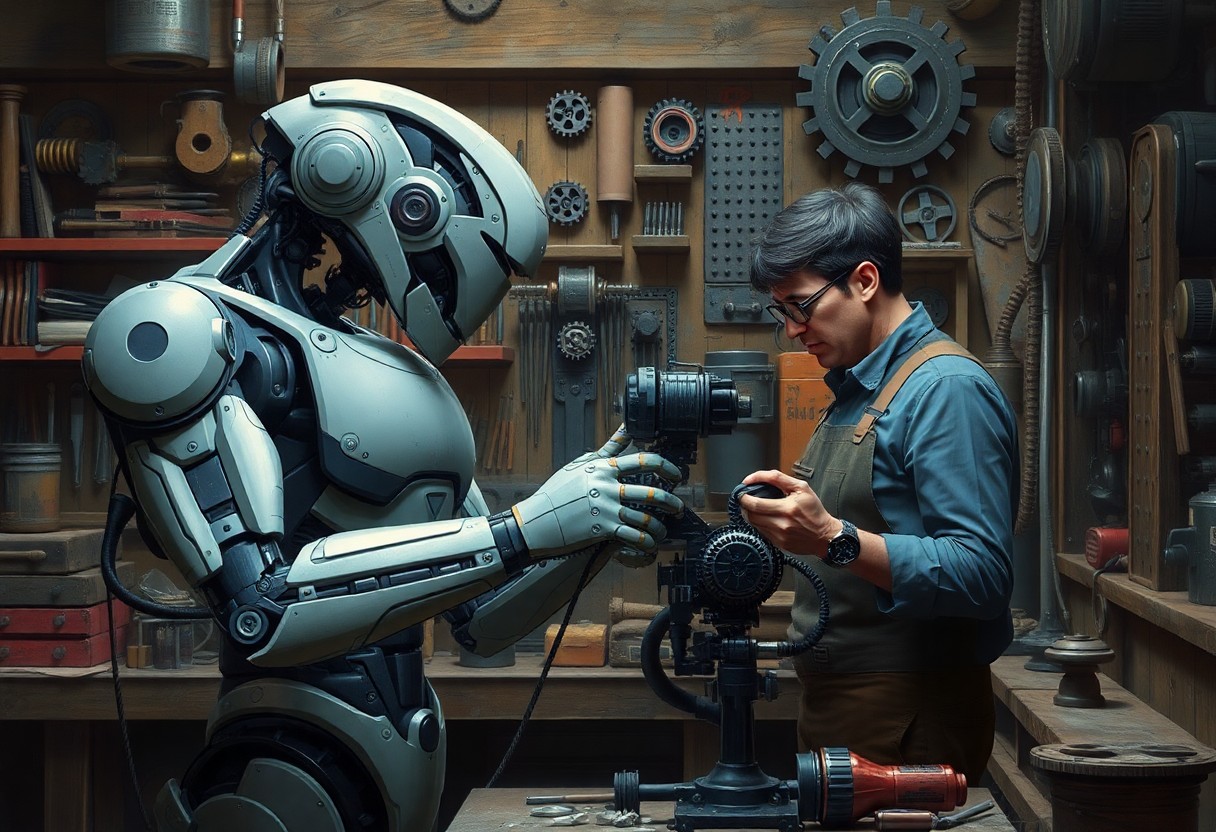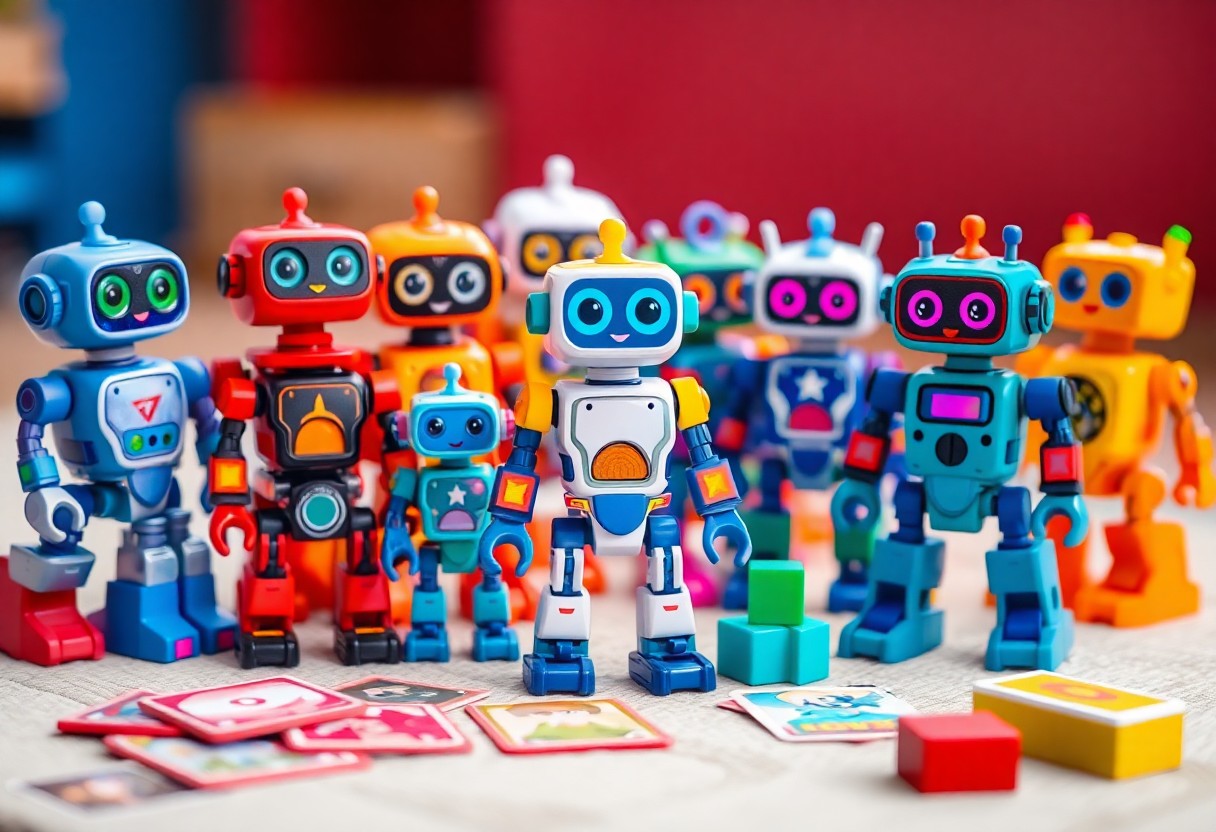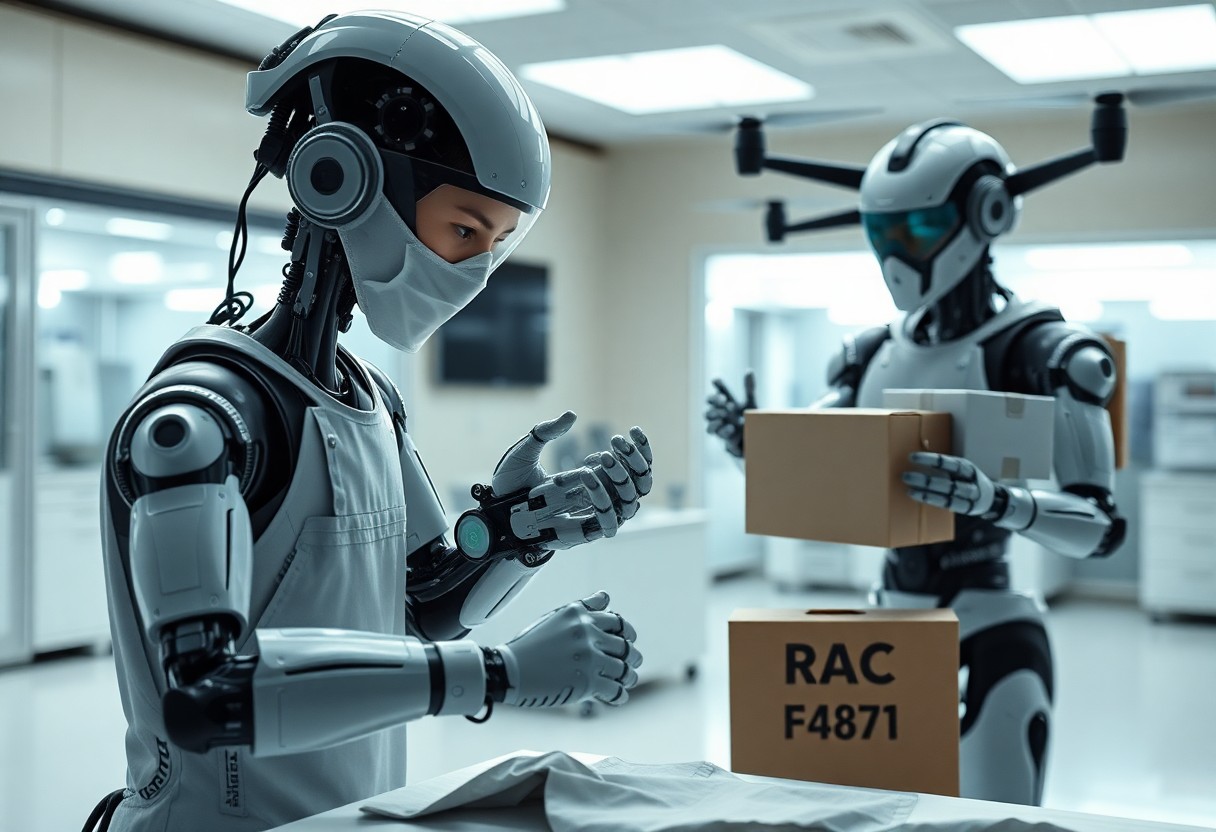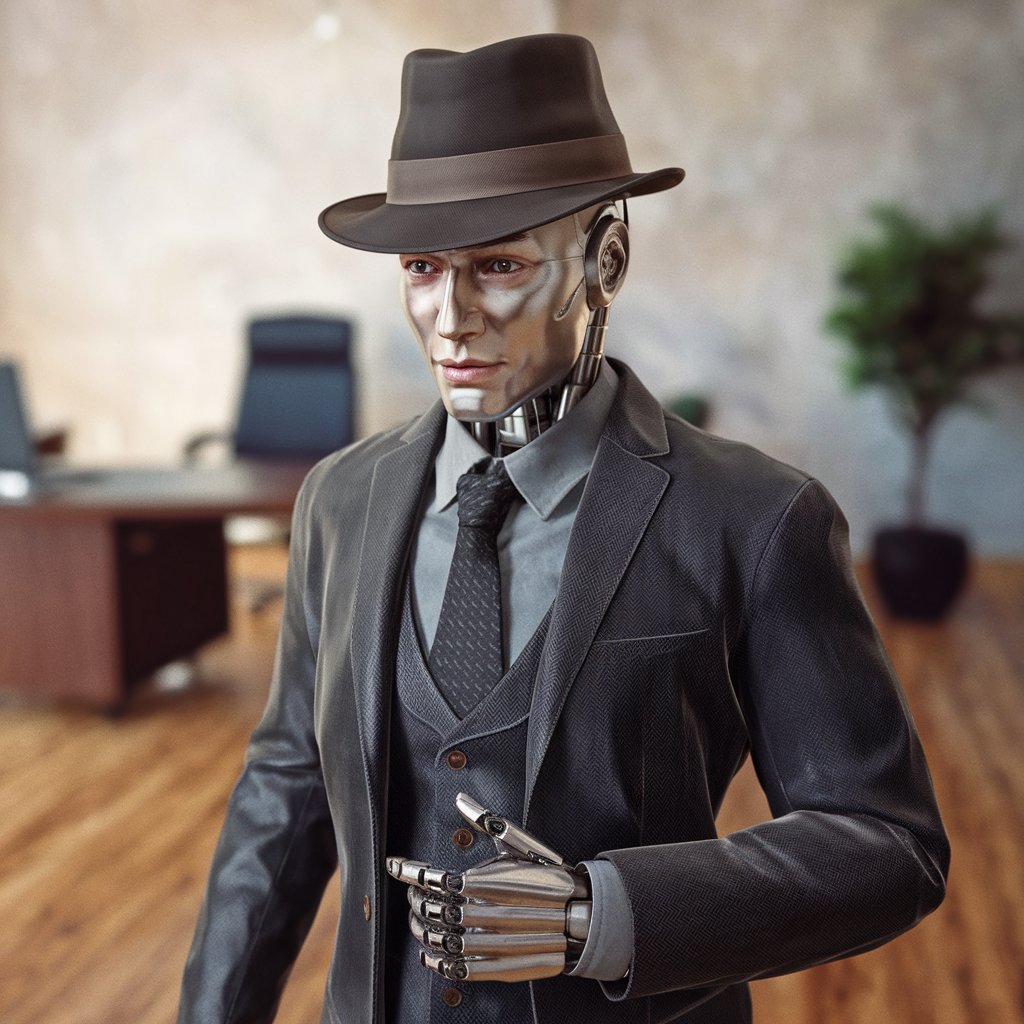Robots are rapidly transforming the landscape of manual labor, raising questions about their potential to outperform humans in various tasks. As you explore this topic, you’ll discover how advancements in technology, including artificial intelligence and robotics, are enabling machines to execute jobs with increasing precision and efficiency. This shift could significantly impact industries ranging from manufacturing to logistics, prompting you to consider the implications for the workforce and your role in a changing economy. Are we on the brink of a new era where robots take the lead in everyday manual endeavors?
The Evolution of Robotics
Your understanding of robotics will be enriched by exploring its history and advancements, revealing how machines have transitioned from simple automated tools to sophisticated devices capable of complex tasks. The journey of robotics has involved significant technological leaps fueled by innovations in artificial intelligence, materials science, and engineering, shaping a future where robots may enhance or even surpass human endeavors.
Historical Context
Across centuries, the concept of automata has captivated human imagination, leading to the creation of early mechanical devices in ancient civilizations. From the simple clockwork figures of the Renaissance to the first programmable machines in the 20th century, each step has contributed to the gradual sophistication of robotics, paving the way for modern technology.
Recent Advancements
With the continuous development of artificial intelligence and machine learning, robotics has experienced unprecedented advancements in capabilities and applications. Today, robots are not only able to perform repetitive tasks efficiently, but they are also learning from their environments, adapting to new challenges, and completing intricate operations, thus transforming industries such as manufacturing, healthcare, and logistics.
Context is key in understanding how these advancements are shaping the future. Innovations such as collaborative robots (cobots), which work alongside humans, and autonomous systems that can navigate complex environments are revolutionizing how work is done. Recent breakthroughs in AI algorithms enable robots to learn from experience, increasing their efficiency and reducing error rates. As you consider the implications of these advancements, it becomes clear that robots are transitioning from mere tools to intelligent partners in various fields.
Comparative Analysis of Human and Robot Capabilities
Clearly, understanding the strengths and weaknesses of both humans and robots is important when exploring their roles in manual tasks. A comparative analysis sheds light on how these entities differ and where they might intersect in performing common activities. Below is a breakdown of various capabilities.
| Capability | Humans | Robots |
|---|---|---|
| Physical Strength and Dexterity | Varied; highly adaptable | Consistent; specialized |
| Precision and Consistency | Inconsistent; subject to fatigue | High precision; non-tiring |
Physical Strength and Dexterity
Behind the scenes of many manual tasks, the physical strength and dexterity of both humans and robots come into play. You may find that while humans possess an adaptable strength, allowing them to adjust to various tasks, robots are engineered for specific physical capabilities. As a result, robots can perform repetitive tasks with uniformity but may struggle with intricate movements that require human-like finesse.
Precision and Consistency
Dexterity plays a significant role in manual tasks, particularly in areas requiring high precision and consistency. Robots often excel in this regard, as they can perform tasks with unmatched accuracy. When creating complex products or assembling items, their ability to maintain consistent quality over long periods is a decisive advantage. You can see this in manufacturing settings where robots operate without fatigue or error, outperforming humans who may experience variability due to concentration lapses or exhaustion.
Capabilities of robots in precision and consistency remain unmatched in many scenarios. This reliability makes them indispensable in high-stakes environments, such as surgical settings or assembly lines, where even minute deviations can lead to significant consequences. You will likely find this is where robots not only complement but may eventually surpass human efforts in achieving high-quality outcomes across various manual endeavors.
Industries Impacted by Robotic Advancements
Even as society continues to evolve, various industries are significantly impacted by robotic advancements. For instance, the integration of robots enhances productivity and efficiency, allowing for increased output and reduced human error. As detailed in Robots in Power Can Have More Influence Than Humans on …, industries are adapting to leverage these technologies for higher performance.
Manufacturing and Construction
Manufacturing processes are increasingly automated, transforming the way products are created. Automation allows you to streamline operations, reduce labor costs, and improve quality control. In construction, robotic machines aid in tasks such as bricklaying and excavation, which enhances safety and efficiency on job sites.
Healthcare and Service Industries
By implementing robotic technologies, healthcare facilities enhance patient care and streamline operations. These robots assist in tasks like surgery, drug dispensing, and even patient transportation, allowing healthcare professionals to focus more on patient interactions and better service delivery. Robotics also paves the way for telehealth and remote surgeries, bringing healthcare to areas that need it most.
Construction has also seen transformations due to robotic advancements, with drones surveying sites, 3D printers producing building components, and exoskeletons aiding workers. This allows you to tackle complex projects with improved safety, efficiency, and speed. The combination of these technologies is redefining how projects are approached, ultimately benefitting the entire industry.
Ethical Considerations in Robotic Implementation
Keep in mind that as robotic technology advances, ethical considerations become pivotal. You must assess the moral implications of machines performing tasks traditionally reserved for humans, particularly regarding autonomy, privacy, and accountability. As robots become integral to daily functions, it’s important to examine how you navigate these complexities to ensure ethical practices guide implementation.
Job Displacement Concerns
Beside the technological advancements, you should acknowledge the potential for job displacement that accompanies robotics. Many worry that as robots undertake manual tasks, your workforce may face significant changes, leading to unemployment in certain sectors. It’s imperative to explore strategies for reskilling and transitioning workers to mitigate these concerns.
Safety and Liability Issues
Concerns about safety and liability when deploying robots in manual roles cannot be overlooked. As you integrate robots into your operations, you must consider the risk of accidents and malfunctions that could cause harm to users or property. Accountability in the event of a failure becomes critical, raising questions about who bears responsibility—manufacturers, operators, or both.
Also, you need to establish clear guidelines regarding the use of robots, including regular maintenance and safety audits, to minimize risks. Ensuring that operational protocols account for technological failures is vital for maintaining safety standards. Additionally, developing comprehensive insurance policies can help protect you and your organization from unforeseen liabilities, thereby fostering trust in robotic technologies while safeguarding your interests.
Future Trends in Robotics
For the future, robotics is set to evolve rapidly, driven by advances in technology and an increasing demand for efficiency across various sectors. As robots become more sophisticated, their capabilities in performing manual tasks will expand, leading to significant shifts in the workforce and the way we interact with machines. You can expect to see more automation in various industries, along with enhanced efficiency and precision in tasks previously performed solely by humans.
AI Integration and Machine Learning
Before delving deeper, consider the transformative impact of artificial intelligence and machine learning on robotics. These technologies enable robots to learn from their environments, adapt to new challenges, and improve their performance over time. You may find this integration revolutionizing how robots complete manual tasks, making them not just automated tools but intelligent collaborators in various settings.
Collaborative Robots (Cobots)
By definition, collaborative robots, or cobots, are designed to work alongside human operators safely and efficiently. These machines enhance productivity by assisting you in completing tasks while sharing the workspace with you. Cobots can improve your workflow by handling repetitive or strenuous activities, allowing you to focus on more complex and creative aspects of your work.
Future advancements in cobot technology will further enhance their collaboration with humans. As these robots become more intuitive and adaptable, you can anticipate a seamless integration of cobots into various industries, ranging from manufacturing to healthcare. This collaboration will not only boost efficiency but will also redefine your workplace dynamics, making it easier for you to focus on tasks that require your unique human touch while leaving labor-intensive chores to your robotic companions.
Public Perception of Robots
Now, as advancements in robotics accelerate, public perception is evolving rapidly. People are beginning to weigh the benefits and challenges associated with robots taking over various manual tasks. While some embrace the possibility of robots enhancing productivity and efficiency, others fear job displacement and a loss of human connection. This mixed sentiment shapes how society views the integration of robots in everyday life.
Trust and Acceptance
Across different demographics, the degree of trust and acceptance of robots varies significantly. Factors such as personal experiences, exposure to technology, and even media portrayal play roles in shaping your comfort level with robotic assistance. Building trust is necessary for widespread acceptance, as you are likely to embrace robots in your daily life if you feel confident in their capabilities and reliability.
Cultural Perspectives
An individual’s cultural background profoundly influences their attitude towards robots. These perspectives dictate whether you view robots as helpful companions or potential threats to traditional roles. Cultural narratives, myths, and historical context shape these perceptions, making them complex and varied from region to region.
Plus, in some cultures, robots are celebrated for their innovation and efficiency, seen as tools that enhance human life and creativity. In contrast, other cultures may be more skeptical, viewing robots as encroachments on human industry and emotion. Understanding these diverse cultural attitudes will enable you to better navigate conversations surrounding robotics and their place in society.
To wrap up
Considering all points, you can see that robots are on the brink of surpassing humans in numerous manual tasks. As technology advances, their efficiency, precision, and learning capabilities are continually improving. This shift could redefine roles in various industries, compelling you to adapt and upskill to stay relevant. While robots may take over many routine tasks, your complex problem-solving and creative abilities will remain invaluable in areas where human insight is irreplaceable. Embracing this transition can empower you to leverage the strengths of both, enhancing productivity and innovation in your work.






